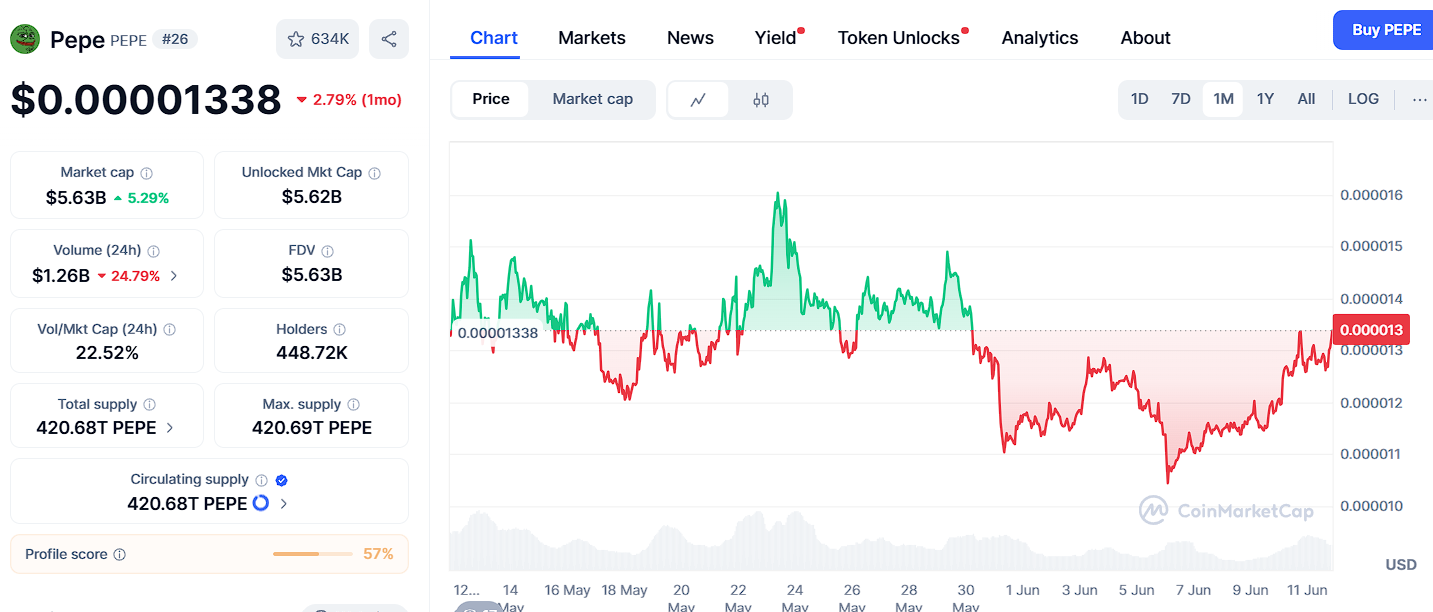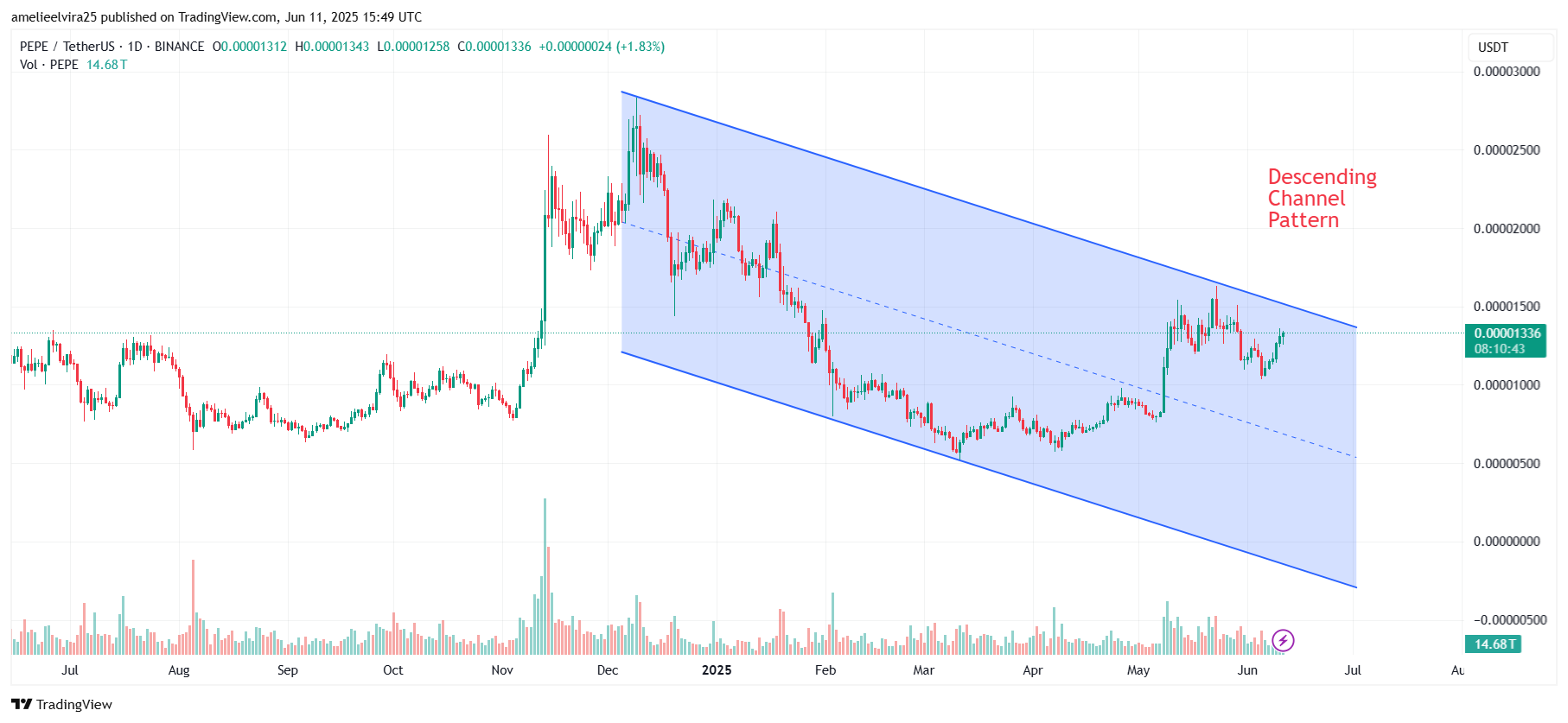Pepe Coin (PEPE) has emerged as a favorite amongst retail investors. With developing network engagement and speculative buying pressure, analysts now propose that PEPE ought to probably climb to $.00002 within the coming months. However, at the same time as meme tokens offer brief-term hype, an extra grounded and software-pushed crypto task—Ozak AI—is generating big buzz for its realistic lengthy-time period outlook. With a presale price of $0.005 and a forecasted target of $1, Ozak AI’s 200x upside may want to eclipse the potential of even the most viral tokens.
Pepe Coin Key Resistance and Support Levels
To reach its $0.00002 target, Pepe Coin must break through several resistance levels, including $0.000013, $0.000016, and $0.0000185. These levels have previously served as price ceilings and will require strong bullish momentum to overcome. On the downside, key support levels sit at $0.0000095, $0.0000078, and $0.0000061. Maintaining support above these zones will be critical if PEPE is to build toward a sustainable rally in 2025.

Descending Channel Pattern Suggests Breakout Potential
The Pepe Coin chart currently reveals a descending channel pattern, which is characterized by lower highs and lower lows forming two parallel, downward-sloping trendlines. This pattern generally indicates a period of consolidation within a broader downtrend.
While often perceived as bearish, descending channels can precede a bullish reversal breakout—especially when accompanied by increasing volume and improving market sentiment. For PEPE, a confirmed breakout above the upper channel line could trigger a surge toward the next resistance levels, adding momentum to its $0.00002 target.

Ozak AI: A Utility-Focused Altcoin with Long-Term Growth Potential
In contrast to Pepe Coin’s meme-fueled nature, Ozak AI represents a cutting-edge AI project combining predictive analytics with decentralized infrastructure. It offers real-time financial insights and tools for traders and businesses alike. Core technologies within the Ozak AI ecosystem include:
- Ozak Stream Network (OSN) for low-latency data processing
- DePIN (Decentralized Physical Infrastructure Network) to ensure decentralized and secure operations
- Customizable Prediction Agents (PAs) powered by AI for tailored forecasting
- Ozak Data Vaults that protect and manage user data securely

The OZ token is central to the ecosystem, used for transactions, governance, and access to premium features. Currently in its 4th presale stage at $0.005, Ozak AI has already raised over $1.2 million and is officially listed on CoinMarketCap and CoinGecko, increasing its visibility and investor trust.

Pepe Coin remains a strong project in the meme coin space, with potential short-term gains as sentiment improves. However, its growth is largely speculative, driven by hype rather than utility. On the other hand, Ozak AI’s AI-powered ecosystem and strong tokenomics offer real-world application and long-term value. For investors seeking sustainable growth and meaningful ROI, Ozak AI’s potential 200x journey from $0.005 to $1 could prove to be the more realistic and rewarding bet in 2025.
About Ozak AI
Ozak AI is a blockchain-based crypto project that provides a technology platform that specializes in predictive AI and advanced data analytics for financial markets. Through machine learning algorithms and decentralized network technologies, Ozak AI enables real-time, accurate, and actionable insights to help crypto enthusiasts and businesses make the correct decisions.
For more, visit:
Website: https://ozak.ai/
Telegram: https://t.me/OzakAGI
Twitter : https://x.com/ozakagi
Disclaimer: This media platform provides the content of this article on an "as-is" basis, without any warranties or representations of any kind, express or implied. We assume no responsibility for any inaccuracies, errors, or omissions. We do not assume any responsibility or liability for the accuracy, content, images, videos, licenses, completeness, legality, or reliability of the information presented herein. Any concerns, complaints, or copyright issues related to this article should be directed to the content provider mentioned above.






